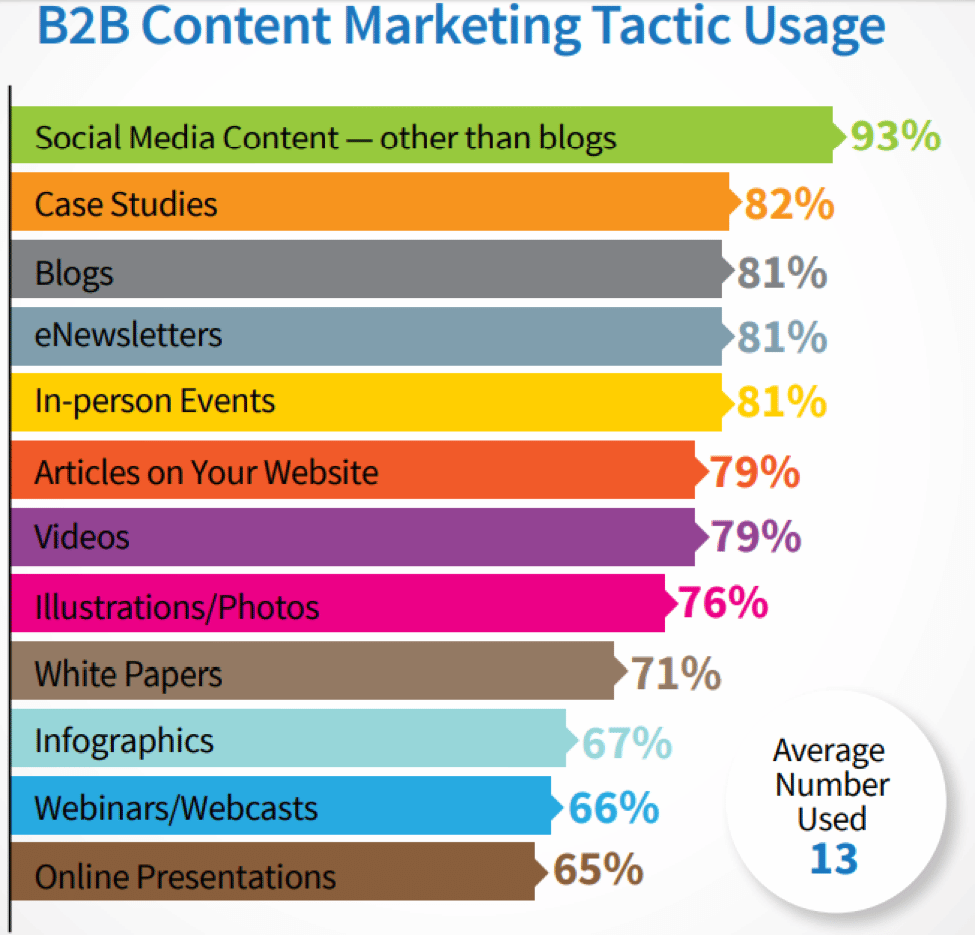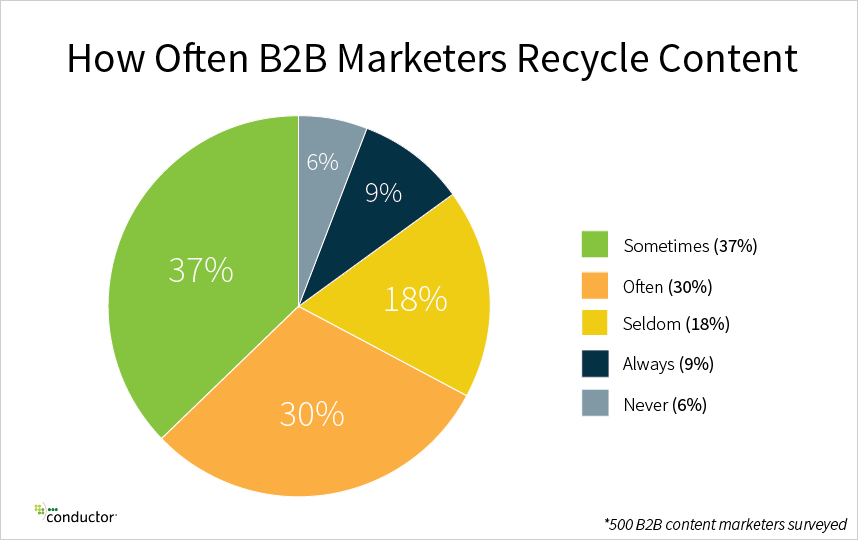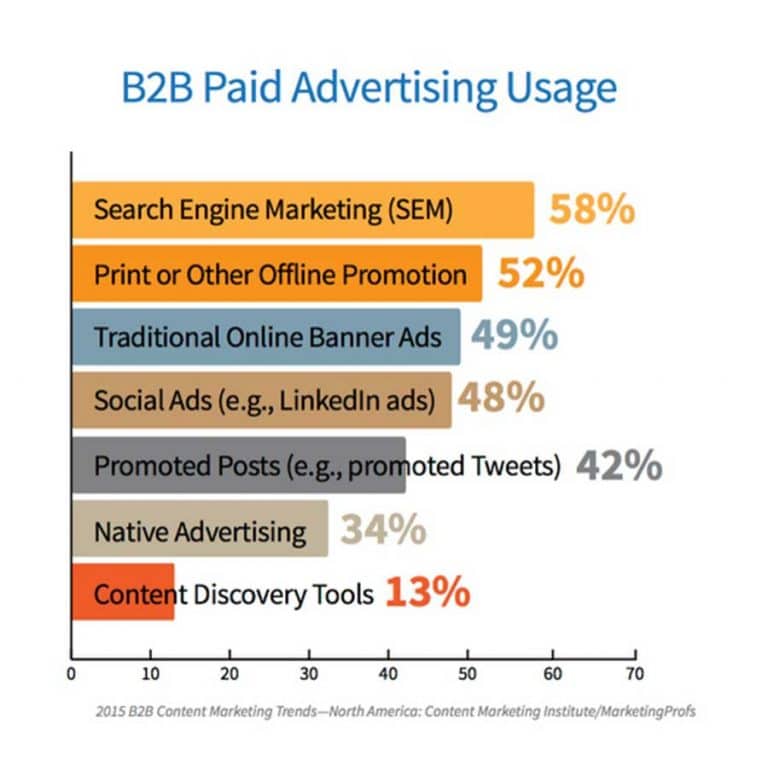To reap the benefits of a successful lead generation strategy, there are many different things to consider – from social media to SEO, analytics to content marketing, there are many channels to explore. When done correctly, an influx of quality leads and sales will consistently be knocking at your door.
The beauty of investing in lead generation is that the tactics you work to create will continue to pay off long into the future. This is because you have put strategies into place that allow your targeted buyers to find you with ease, and you then guide them through all of the processes involved in purchasing from you.

Acquiring new customers will take time, but know that if you put in the time to create the right lead generation strategy, the results will speak for themselves by driving revenue for your business.
In today’s blog post, I’ll walk you through effective lead generation strategies and tactics that will help drive high-quality leads to your business.
Let’s get started…
Getting Started with Lead Generation
The key to succeeding with your digital marketing efforts is to get focused on what matters most to your business and what’s actually going to move the needle.
Do any of these statements sound familiar to you?
- “We should be on YouTube because there are over 1B users on there.”
- “We have to also use Pinterest because there are over 66M active users per month.”
- “Don’t forget Facebook, Twitter, Instagram, email marketing, blogging, mobile, local events, and everything else, too!”
You get the point. Whether you’re in charge of a marketing department, the CEO of a startup, or a small business owner, you already know that getting overwhelmed by all of these requests can get in the way of being productive. However, the most successful marketers and marketing campaigns have been the ones that focus on doing less and yielding higher results before adding more to the marketing mix.
Plan out your marketing roadmap by understanding the following:
- Where are your existing/potential customers online?
- What type of conversations are they having? How can you participate in those conversations?
- What are the top three executions you will implement within a 90-day window?
- How will you eliminate the noise of being everywhere and become more specific about being in the right place at the right time?
- How will you get cultural buy-in? (Marketing isn’t just a one-man job; it requires an entire organization to be collaborative and participate)
- Nail down the top metrics you will need to track to show progress.
- Nail down a budget to work off of. Stop settling with “yeah if we see progress, we’ll spend more, but for now only spend this much.” Build a model around spend and potential ROI – that way, you’ll have a budget that will foster your efforts, not hinder them. By failing to do this, you risk falling into the bucket of having high expectations with little ability to yield amazing results.
1. Establish a Clear Strategy
In order to successfully execute lead gen campaigns, you must have a clear strategy that lays out what you’re trying to accomplish, how you will go about achieving your goals, and when you forecast results will be seen.
With that in mind, make sure you have the following items in place:
- S.M.A.R.T goals identified. Doing so will help create alignment between sales and marketing by working towards a collaborative objective. (E.g. “We want to increase generated leads by 20% in the next 90 days; sales will work towards having a close rate of 70% or higher).
- Competitive analysis. Keep tabs on your competitors to understand what they’re doing that’s working well (i.e. taking business away from you) and where there are major gaps that you can fill in. SEMRush will conduct a free competitor overview for your business so that you can better analyze what tactics are working for your competitors and where some opportunities may lie.
- Budget properly. Here’s the thing — it takes money to make money, so be realistic in terms of how much you’ll need in order to be effective with your executions.
2. Case Studies

Online reviews or customer testimonials can have a real influence on your business and the sales you generate. In fact, 90% of buyers are typically swayed by positive reviews.
You can incorporate positive reviews in ways such as:
- Asking a client to be a guest speaker in a webinar.
- Placing client logos on your website, email signature, and blog.
- Utilizing social media to demonstrate positive feedback; i.e. posting them on Facebook, LinkedIn, Twitter, YouTube, etc.
3. Infographics
Since infographics are liked and shared on social media 3x more than any other type of content, you should make an effort to repurpose popular blog posts by turning them into infographics. They present ideas, selling points, and important information in an engaging and illustrative way that is easily understood.
If you don’t feel comfortable with graphic design — or even if you do, but don’t have the time — I would recommend hiring a freelancer from sites like Fiverr or FlexJobs to make your infographic for you. Fiverr has upfront pricing and many options for creating single infographics, starting at just $15.
Also make sure your infographics are easy to embed, especially if influencers come across them and want to reshare on their own blogs. Doing so will create backlinks to your website which help with rankings and also create more website traffic.
4. Content Repurposing
You may already have a successful blog, but trying to create fresh content consistently can be difficult, which is why recycling what you already have can help save time and money. Repurposing content can help you reach out to more potential customers, reiterate your message, and allow you to evaluate what content engages more customers.

Here are a few ideas of how you can repurpose your content with ease:
- Turn a blog post into some content for social media platforms
- Produce a blog post that details what your latest webinar is about
- Turn your content into newsletters
- Change it into visual content, i.e. a video, infographic, or eBook
(Tip: Check out Expanding the Lifecycle of Your Content Assets to get more ideas on how you can repurpose your content pieces)
5. Analytics
Analyzing all of your executions is essential when trying to learn what works and what doesn’t — and this will help you make improvements along the way. In fact, utilizing analytical data has helped 65% of businesses increase their revenue by over 10%.
You can use analytics across all of your marketing implementations to monitor email performances, content marketing, social media efforts, PPC results, banner advertisements, SEO, and more. Doing so will also help you understand which channels are driving the best conversions that then lead to the best customers. Know that getting the initial sale is great, but you also want to identify the avenues that are great for retention.
SEMRush has a great traffic analytics tool that can help you get started in analyzing where your website traffic is coming from and what avenues provide the most quality traffic. This way, you can focus your marketing dollars on the most effective tactics and make every dollar count.
6. SEO
Chances are high that your customers are going to use a search engine during their buying process, so you need to ensure that you’re appearing highly in these searches. In order to do this, you’ll need to analyze your keywords, produce content, create links, and optimize pages that are centered around what your buyers are looking for.
The importance of a strong SEO strategy is shown by recent research, which indicates that the closing rate of SEO leads is 14.6%, compared to just 1.7% from outbound leads like print advertising or direct mail.
For example, Practical ECommerce’s strategy shows how long-tail keywords can work for smaller businesses. They focused on optimizing the long-tail keyword “A/B testing tools for small business,” and when you remove all of the paid advertising, they rank at the top of Google.
As with the other tactics, don’t be afraid to outsource. SEMRush has a great SEO toolkit if you want to go the DIY route with your SEO, but you can also find highly qualified freelancers on Fiverr or Flexjobs to enhance SEO for your website. Prices on Fiverr start at $5, but to put in place a proper SEO strategy will likely cost a bit more. But remember — time is money, and if you can free up your time by hiring a freelancer, the investment could eventually pay for itself.
7. SEM

Having an effective PPC campaign in place can be one of the ways to generate leads — and fast. When your ad appears in someone’s results, it’s because they’re looking for a service or product that you offer. Therefore, you need to provide ads that will get to the top, which will involve a lot of research into what people are searching for and what keywords they’re using.
Additionally, because a lot of B2B buyers will conduct comparison shopping before buying, you’ll need your adverts to provide them with information. Include white papers and case studies in your campaigns instead of the “buy nows” that you’d find in B2C.
Remarketing involves targeting people through your ads who have already visited your website or app and involves creating lists of these people that you want to target again. This allows you to refine who you are targeting and also offers an effective way of getting your brand back in front of potential customers (adding to your brand recognition) and is a great way of re-engaging your leads.
8. Visual Content
94% more views are achieved on content that has relevant images than those who don’t, and visual content is also nominated as one of the top 5 most effective marketing tactics for B2B companies.
Having powerful images and visual content isn’t just important for engaging clients on social media but is also a powerful SEO tool as well. Utilizing alt-tags on the images that are included within your web pages and blog will help to make sure you appear as image search results and will increase the click-through rates to your website.
Adding visual content to your website doesn’t just mean using videos and/or images, but you can also add gifs, memes, infographics, presentations, and screenshots. All of these different visual elements will add to the layers of intrigue and interaction you have created on your site, thus increasing engagement and lead generation.
Final Thoughts – Automate Where You Can
This strategy involves nurturing your leads so you can turn them into sales in a quicker time frame, decreasing the number of sales that are lost and the amount spent on marketing. Statistics indicate that companies that have a successful automatic lead management program in place see a 10% or more increase in revenue.
In order to nurture your leads in the most effective way possible, you’ll need to have a strategy that will ensure you target your customers in the best way possible. Having some form of customer management in place (i.e. a CRM or email database) will help keep all of your leads’ details together and will demonstrate your customers’ behavior. You can then segment your customer base with automatic score leads, which will separate your customers into categories so you can target them effectively and with relevant content.
Ontraport is a great service to help you start segmenting your audience and score leads. Ontraport offers a 14-day free trial, and then plans start at $79/month. Hubspot is a great service as well that might be more appropriate if you need a robust marketing service for your company. Hubspot now offers free email marketing software and also has several plans that can help you automate social media updates, create landing pages, and analyze website traffic. Hubspot also offers a free trial period if you want to try it out without having to commit.
Make sure you also implement lead scoring which will help understand which workflows leads and customers should go into during the buying journey. Doing this will help you stay organized with qualifying leads who are ready to speak with sales and also with those who need more nurturing.
Having these strategies in place provides your company and your sales team with appropriate methods that will reduce the sale cycle since everything is in place to make an effective sale. Sales teams that follow up on 75% of marketing-generated leads are employed by 46% of marketers who are classified as having mature lead management in place within their company.
Disclosure: Please note that some of the links above are affiliate links. I only recommend products and services that I use and stand behind, and if you decide to try them, I will earn a commission at no cost to you. Doing so helps me run this blog and provide free content for you, my readers.